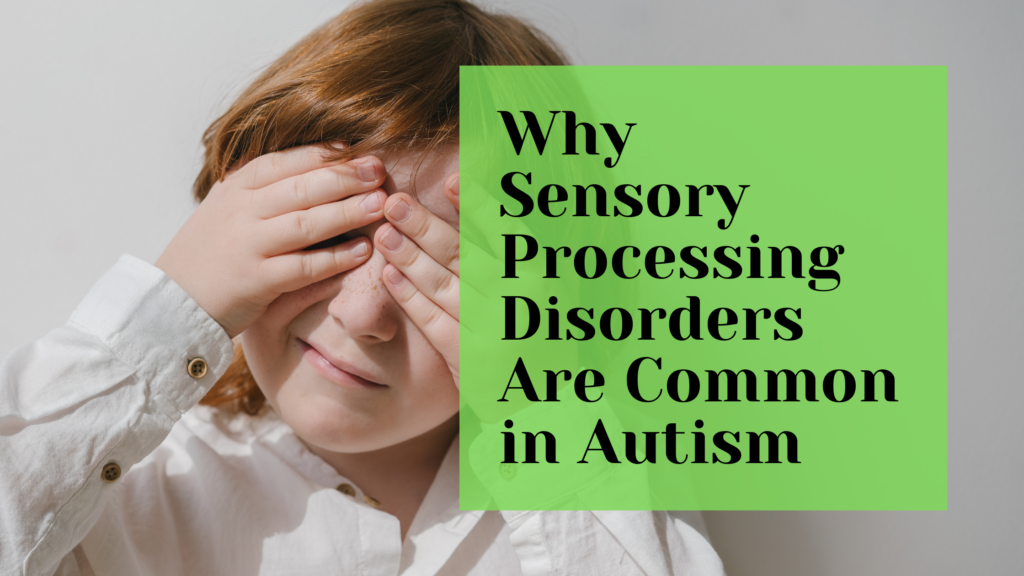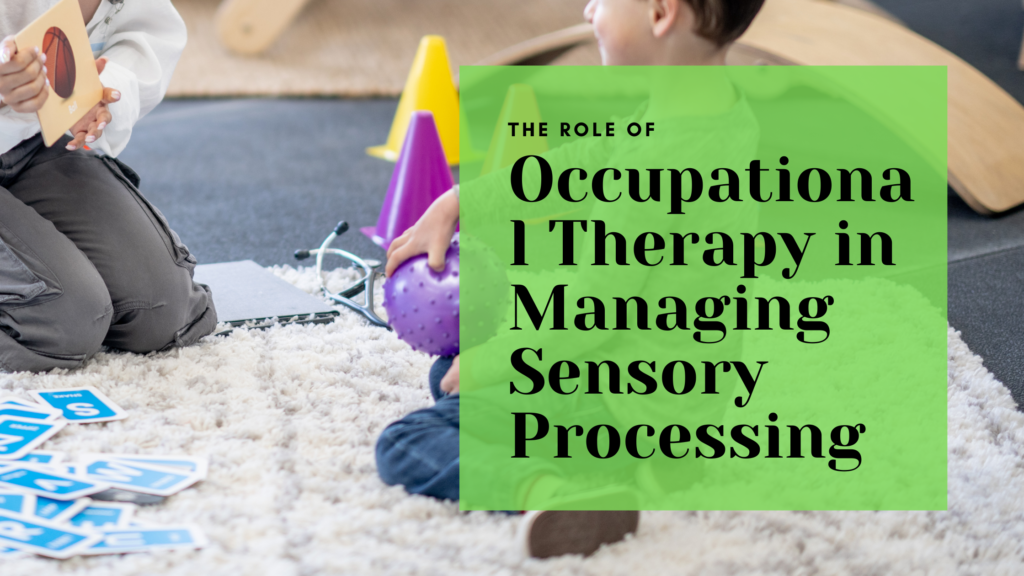I. Introduction
Sensory Processing Disorder (SPD) refers to difficulties in how the brain interprets and responds to sensory information from the environment, such as sights, sounds, touch, and movement. This condition is commonly associated with autism spectrum disorder (ASD), affecting how individuals experience the world around them. In autistic individuals, SPD can be particularly overwhelming, making day-to-day tasks, like sleeping, much more challenging.
Understanding how SPD affects sleep in people with autism is essential because sleep plays a crucial role in physical health, emotional well-being, and cognitive functioning. When sleep is disrupted, the challenges that come with autism and sensory processing can worsen. This article explores the relationship between sensory processing and sleep, focusing on how SPD impacts the ability to fall asleep, stay asleep, and achieve restful sleep. We will also cover strategies and tools to help improve sleep quality for those affected.
II. The Connection Between Sensory Processing and Sleep in Autism
Sensory Processing in Autism
Autism affects how the brain processes sensory information. People with autism may experience sensory input differently from others, with some being oversensitive (hypersensitive) or under-sensitive (hyposensitive) to stimuli like sounds, lights, touch, or even the way their body feels in space. These sensory processing issues can make everyday environments feel overwhelming, stressful, or confusing.
How Sensory Input Affects Sleep
For individuals with sensory processing challenges, sleep can become a difficult task. Hypersensitivity to sensory input can make it hard for someone with autism to relax and fall asleep. Even the smallest sound or light can feel exaggerated, making the environment uncomfortable. On the other hand, those with hyposensitivity might not feel settled because they don’t feel enough sensory input to help them relax. This imbalance can delay sleep onset, cause frequent waking during the night, and lead to poor-quality sleep overall.
Impact on Sleep Quality
Sensory overload can make it hard for people with autism to reach the deep, restorative stages of sleep. When the brain is constantly trying to process incoming sensory information, it can lead to restless sleep. Additionally, under-stimulation can have a similar effect, making it difficult for the individual to feel relaxed enough to sleep soundly.
III. Common Sensory Challenges That Impact Sleep
Auditory Sensitivity
Hypersensitivity to sound is common in people with autism. Noises that others may ignore—like the ticking of a clock, distant traffic, or even a fan—can be disruptive. Even small, unpredictable sounds can jolt someone out of sleep or make it hard to relax in the first place.
Tactile Sensitivity
Tactile sensitivity refers to how a person responds to touch or physical sensations. For those with autism, certain fabrics, bedding, or even the temperature of the room can cause discomfort. This sensitivity to touch can prevent restful sleep by causing constant discomfort or restlessness as the person tries to adjust their bedding or sleeping position.
Visual Sensitivity
Many people with autism are sensitive to visual stimuli, such as bright lights or certain colors. A night light or even the glow from electronics in the room can be enough to disrupt sleep. This sensitivity makes it harder for them to fall asleep and can lead to frequent wake-ups if they encounter sudden changes in light.
Proprioceptive and Vestibular Issues
Proprioception and vestibular senses help us understand where our body is in space and how balanced we are. Some individuals with autism have difficulties with these senses, leading to discomfort while trying to fall asleep. They might feel disoriented or fidgety, making it hard to relax and find a comfortable position in bed.
IV. Sleep Disorders Common in Autistic Individuals
Insomnia
Insomnia, or trouble falling and staying asleep, is common in individuals with autism. The sensory issues they experience can delay the onset of sleep or wake them up multiple times throughout the night. According to research, up to 80% of children with autism have some form of sleep disorder, with insomnia being one of the most prevalent .
Sleep Fragmentation
Sleep fragmentation refers to frequent waking during the night, which is often caused by sensory discomfort. For instance, a child might wake up multiple times because their bedding feels uncomfortable or they hear noises that disrupt their sleep.
Delayed Sleep Onset
Many autistic individuals experience delayed sleep onset, meaning it takes them a long time to fall asleep. Anxiety, overstimulation from their environment, or their body’s difficulty winding down due to sensory sensitivities often contribute to this problem.
Difficulty Achieving Deep Sleep
Deep sleep is the most restorative phase of the sleep cycle, but sensory processing issues can make it difficult for autistic individuals to reach this stage. Sensory overload or under-stimulation can prevent the brain from fully relaxing, keeping the individual in lighter stages of sleep, which affects overall sleep quality.
V. The Impact of Poor Sleep on Autistic Individuals
Behavioral Consequences
Poor sleep can have a significant impact on behavior. When someone doesn’t get enough rest, they are more likely to feel irritable, anxious, and prone to emotional meltdowns. For autistic individuals, this can exacerbate other challenges, such as managing sensory overload or regulating emotions.
Cognitive and Learning Challenges
Lack of sleep affects cognitive functioning, including memory, attention, and the ability to learn new information. This is especially concerning for children with autism, as poor sleep can interfere with their ability to focus in school or therapy, hindering their development.
Emotional Regulation Difficulties
Sleep is crucial for emotional regulation. Without adequate sleep, individuals with autism may find it harder to manage their emotions, which can increase the likelihood of stress and anxiety. Sensory overload becomes even harder to handle when emotional regulation is impaired by sleep deprivation.
Physical Health Effects
The long-term physical health consequences of poor sleep include fatigue, weakened immune function, and increased stress levels. Over time, this can contribute to other health issues, making it even more important to address sleep challenges early on.
VI. Strategies for Managing Sensory Processing Challenges and Improving Sleep
Create a Sensory-Friendly Sleep Environment
One of the most effective ways to improve sleep is by creating a sensory-friendly sleep environment. This could involve using soft, comfortable bedding that suits the individual’s tactile preferences, using blackout curtains to control light, and introducing a noise machine to mask disruptive sounds.
Use Weighted Blankets or Compression Items
Weighted blankets and compression items can provide proprioceptive input, helping individuals feel secure and relaxed. The deep pressure stimulation from these items has been shown to help reduce anxiety and improve sleep quality.
Incorporate a Calming Bedtime Routine
A consistent bedtime routine can help prepare the body and mind for sleep. Activities like deep breathing exercises, listening to soft music, or taking a warm bath can help reduce sensory overload and make it easier for the person to fall asleep.
Regulate Sensory Input
Before bedtime, it’s important to regulate sensory input to avoid overstimulation. This may involve reducing screen time, lowering noise levels, and avoiding stimulating activities that can make it harder to fall asleep.
Limit Environmental Stimulation
Keeping the room cool, decluttering the space, and limiting bright lights can help reduce sensory distractions that interfere with sleep.
VII. Sensory Tools and Therapies to Improve Sleep
White Noise Machines and Noise-Cancelling Devices
White noise machines can be helpful for individuals who are hypersensitive to sound, as they create a steady, soothing background noise that masks more disruptive sounds. For those who are extremely sensitive, noise-cancelling headphones or earplugs may also be useful during sleep.
Weighted Blankets and Body Socks
These tools provide deep pressure stimulation that can calm the nervous system, promoting relaxation and reducing anxiety before sleep.
Soft Lighting and Visual Tools
Using calming lights, such as dimmable night lights, can help individuals who are sensitive to bright or flickering lights. Soft, soothing colors are also recommended for creating a visually calming sleep environment.
Sensory Integration Therapy
Sensory integration therapy, often provided by occupational therapists, helps individuals with autism manage their sensory processing difficulties. This therapy can help improve how the brain processes sensory input, which may reduce the impact of sensory sensitivities on sleep.
VIII. Collaborating with Therapists and Sleep Specialists
Consult with Occupational Therapists
Occupational therapists play a key role in helping individuals with autism manage sensory challenges. They can assess sensory needs and recommend personalized interventions, such as specific bedding materials or sensory tools, to improve sleep quality.
Work with Sleep Specialists
Sleep specialists can help diagnose any underlying sleep disorders and provide guidance on managing sleep challenges related to sensory processing. They may also recommend cognitive behavioral therapy for insomnia (CBT-I), which has been shown to be effective in managing sleep problems.
Developing a Sleep Plan
Collaborating with therapists and specialists to develop a structured sleep plan can help integrate sensory-friendly strategies and behavioral support into the individual’s routine. This can lead to long-term improvements in sleep quality.
IX. Long-Term Strategies for Managing Sensory-Related Sleep Challenges
Track Sleep Patterns
It’s important for caregivers to monitor sleep patterns and keep a log of sensory triggers that may be affecting sleep. This information can help identify areas that need improvement.
Adjust the Sleep Environment Over Time
Sensory needs may change over time, so it’s important to regularly update the sleep environment and bedtime routine as needed. Regular check-ins with therapists can help ensure that sensory needs are being met.
Celebrate Sleep Progress
Small improvements in sleep quality should be celebrated. Progress may take time, but recognizing and rewarding these changes can encourage continued effort and consistency in managing sensory-related sleep challenges.
X. Conclusion
Sensory processing disorders significantly impact sleep in individuals with autism. Addressing sensory sensitivities is crucial for improving sleep quality, which in turn enhances overall well-being. By creating a sensory-friendly sleep environment and incorporating personalized strategies and tools, it is possible to improve sleep for those affected. Parents, caregivers, and therapists should work together to develop individualized approaches that address specific sensory needs and promote restful sleep for autistic individuals.
Here’s a table with 10 key points based on the article:
| # | Key Point | Description |
|---|---|---|
| 1 | Sensory Processing Affects Sleep Quality | Sensory processing issues, common in autism, can disrupt the ability to fall asleep and maintain restful sleep. |
| 2 | Identify Sensory Triggers That Impact Sleep | Sounds, textures, lighting, and temperature can all act as sensory triggers that prevent restful sleep. |
| 3 | Create a Sensory-Friendly Sleep Environment | Use soft bedding, noise machines, dimmable lights, and weighted blankets to reduce sensory overload at bedtime. |
| 4 | Use Weighted Blankets or Compression Gear | Proprioceptive input from weighted items provides comfort and helps autistic individuals relax before sleep. |
| 5 | Establish a Calming Bedtime Routine | Consistent bedtime routines with sensory calming activities, like deep breathing or a warm bath, promote relaxation. |
| 6 | Address Tactile Sensitivities | Ensure that bedding and pajamas are comfortable and free from irritating textures that can disrupt sleep. |
| 7 | Reduce Auditory and Visual Stimulation Before Bed | Limit exposure to loud noises, bright lights, and stimulating screens to help the brain wind down before sleep. |
| 8 | Use Sensory Tools to Promote Sleep | Tools like white noise machines, weighted blankets, and soft lighting can create a more relaxing sleep environment. |
| 9 | Work with Occupational Therapists to Address Sleep Issues | Occupational therapists can help identify sensory processing challenges and recommend strategies to improve sleep. |
| 10 | Track Sleep Patterns and Adjust Strategies | Regularly monitor sleep patterns and sensory triggers to fine-tune the sleep environment and routine as needed. |
This table provides a summary of the key points to consider when addressing sensory processing issues that impact sleep in autistic individuals.


